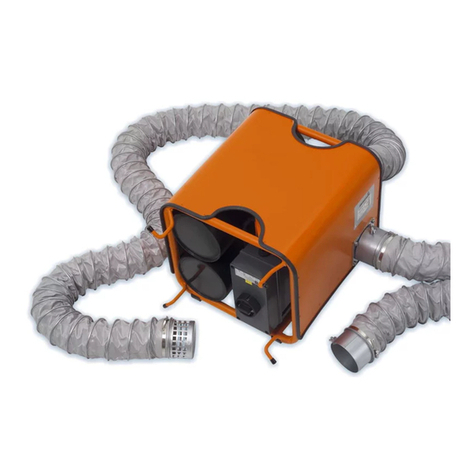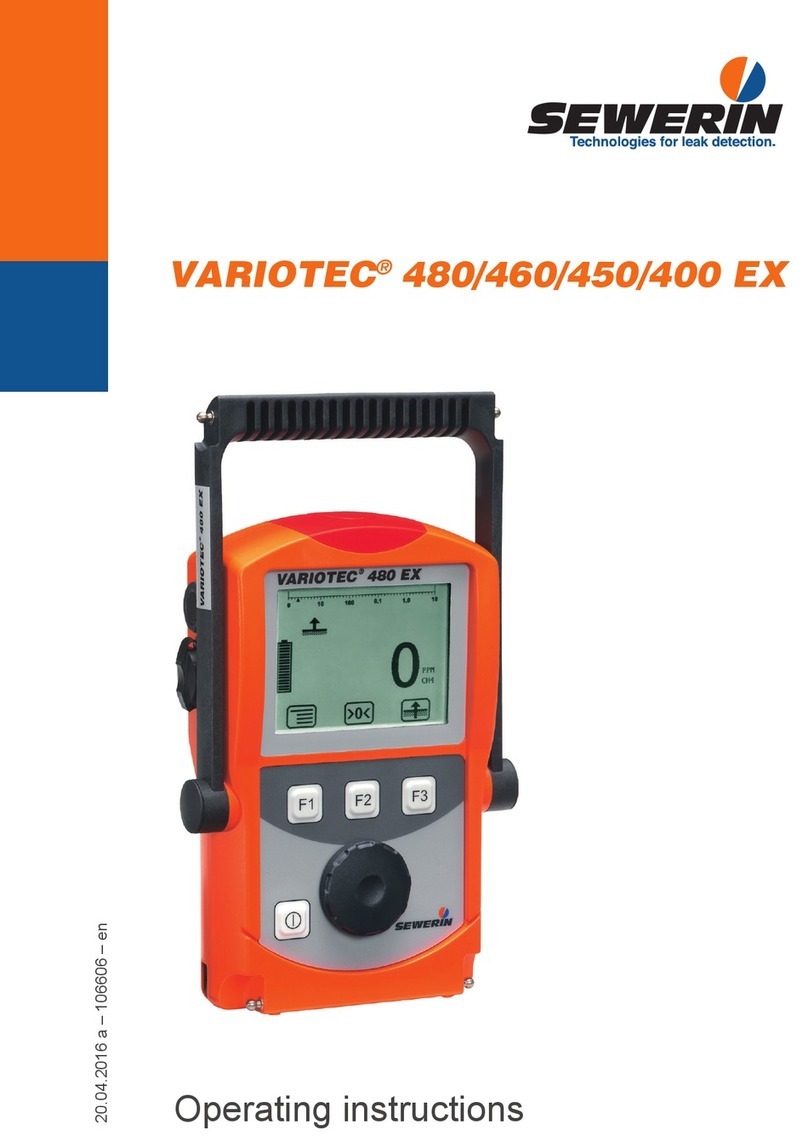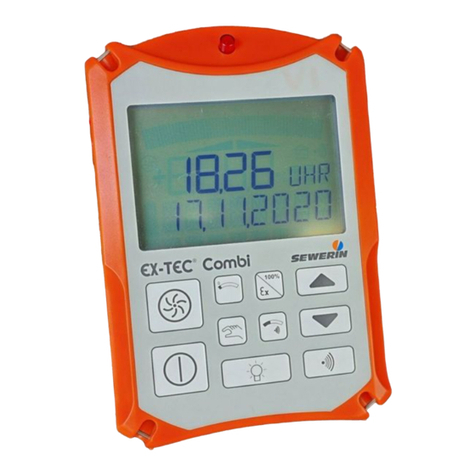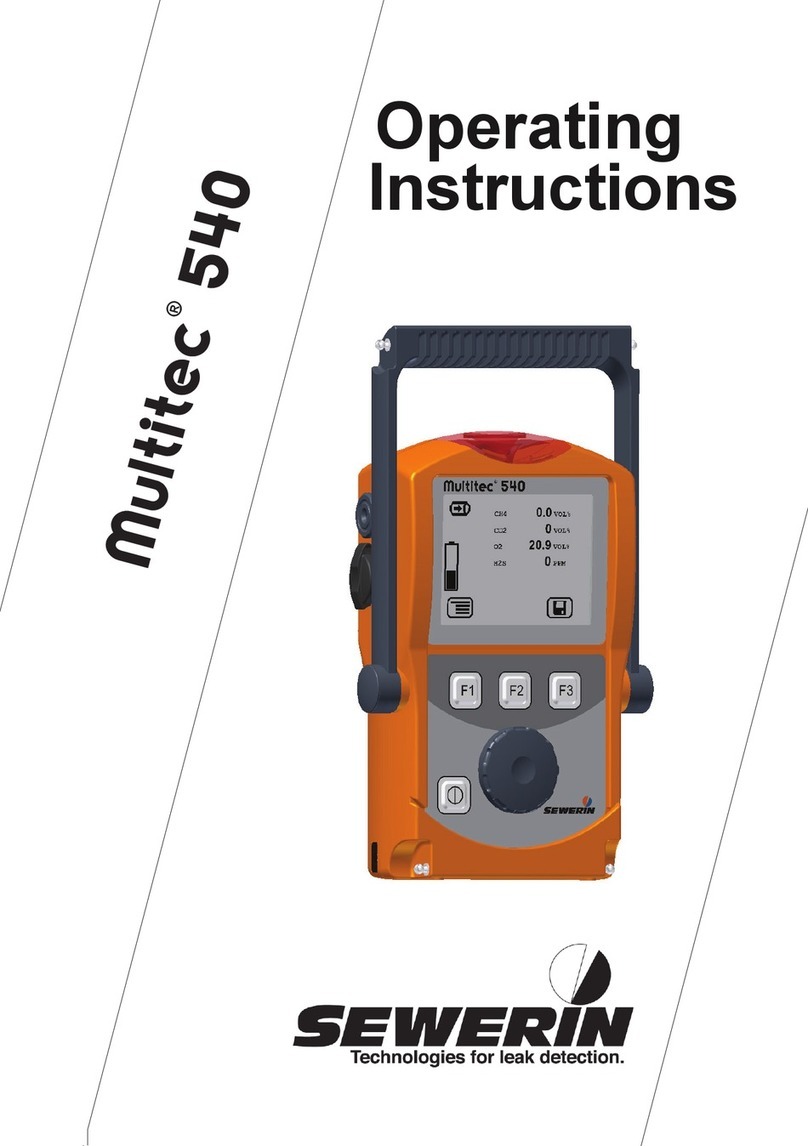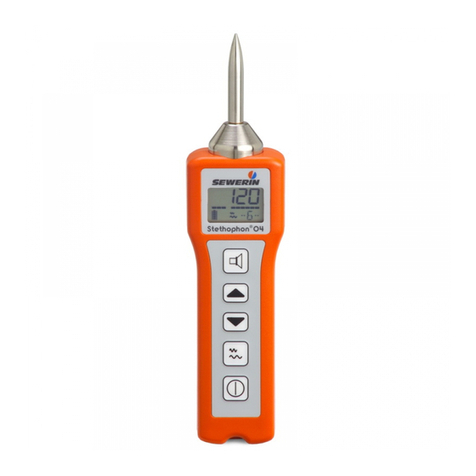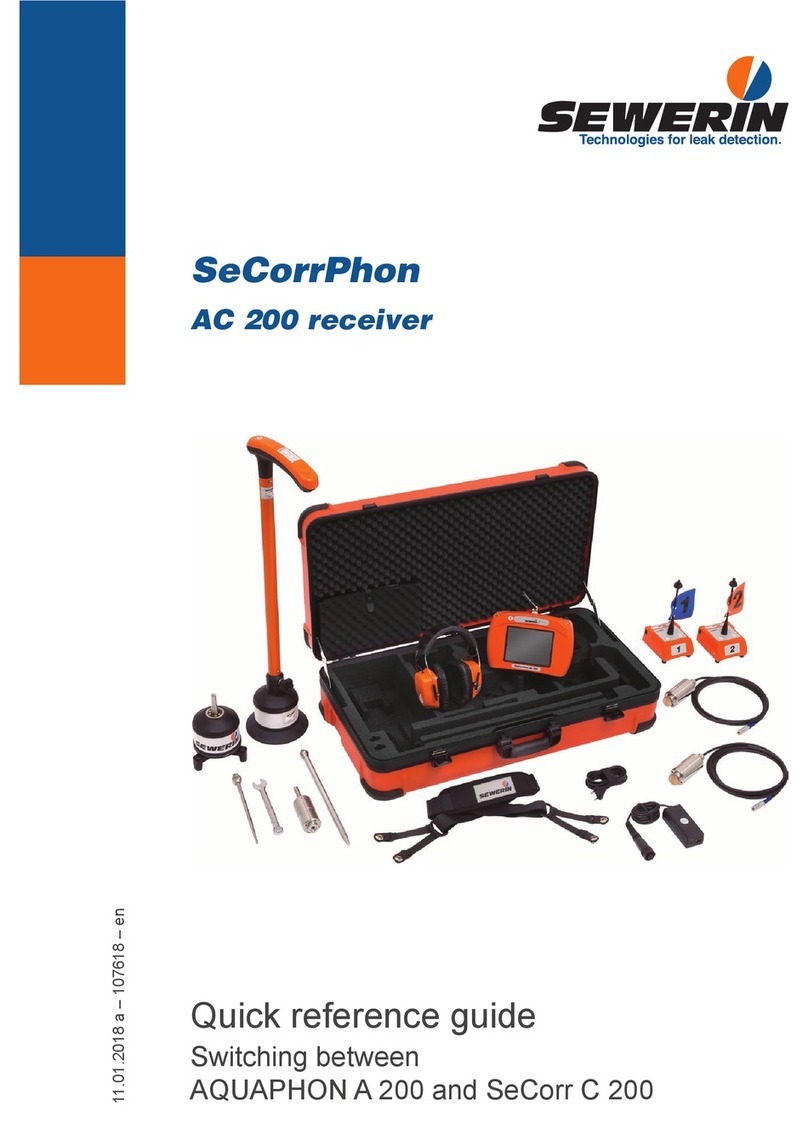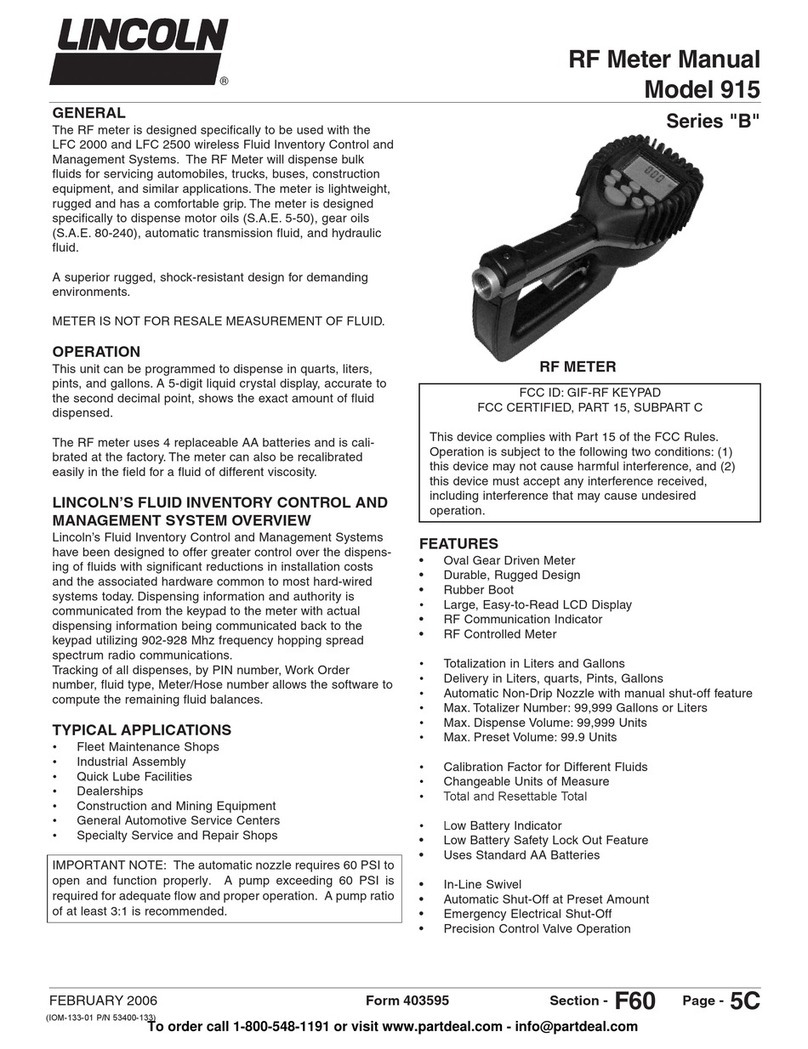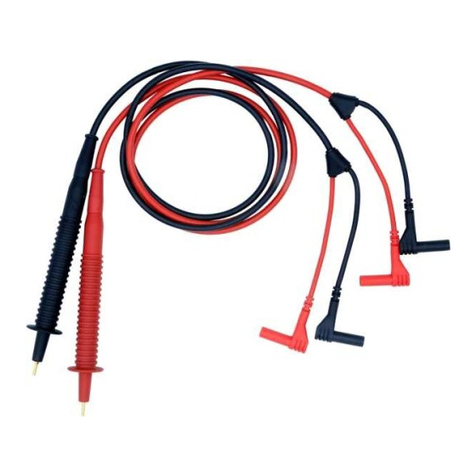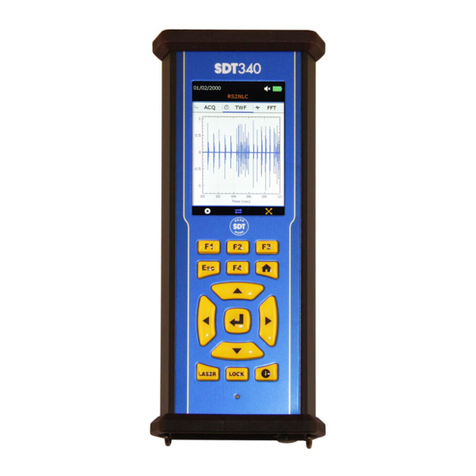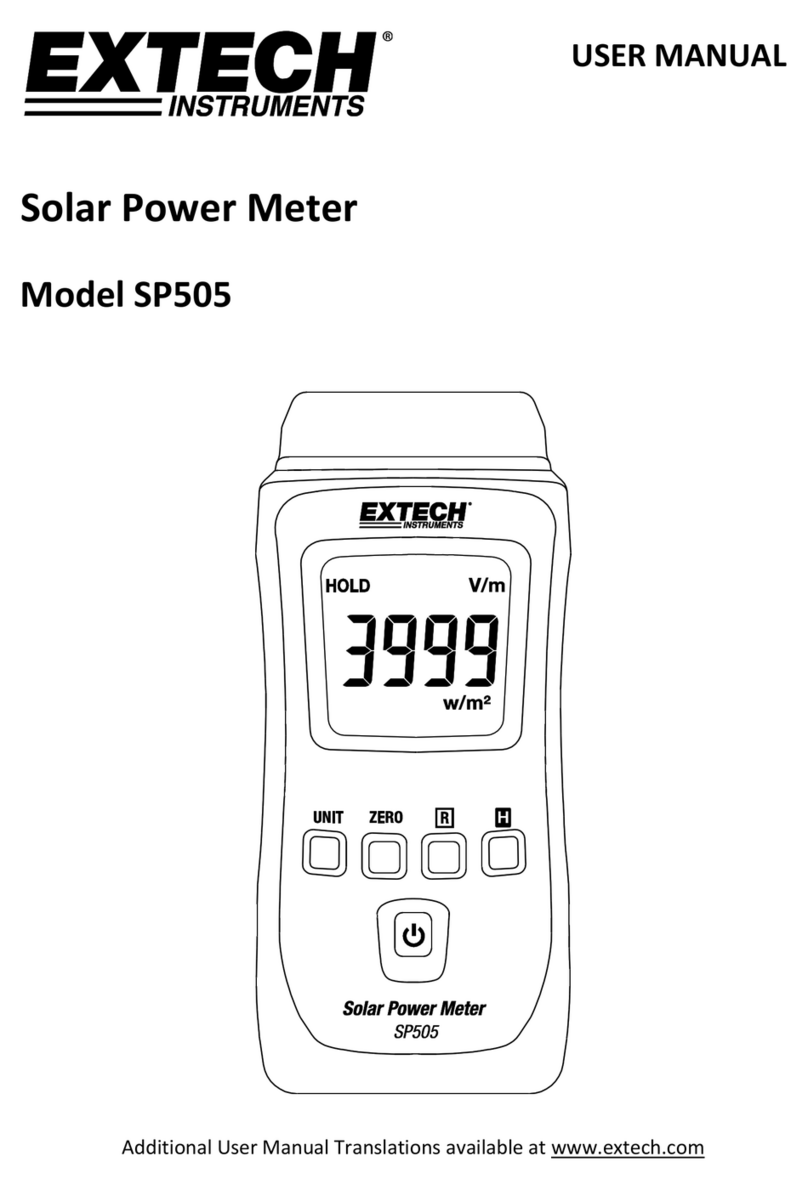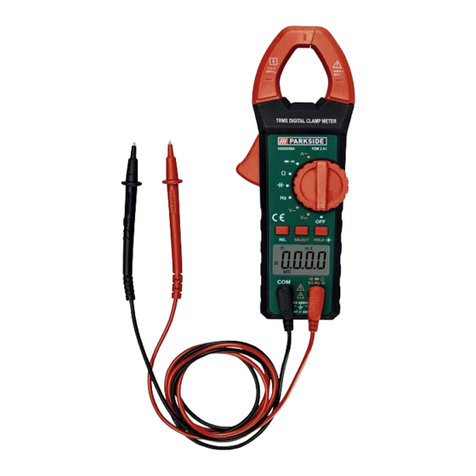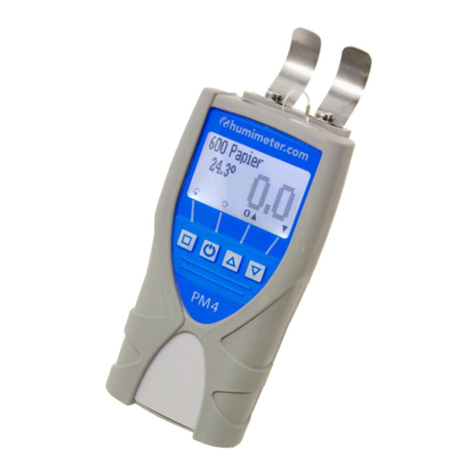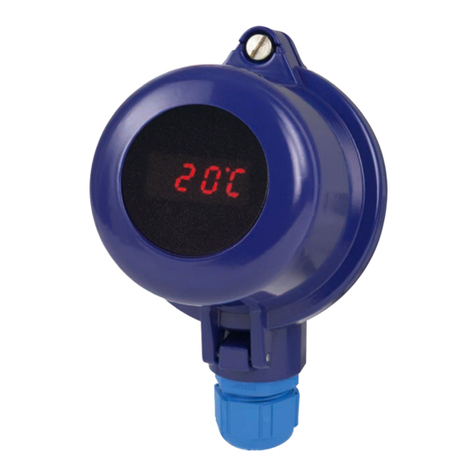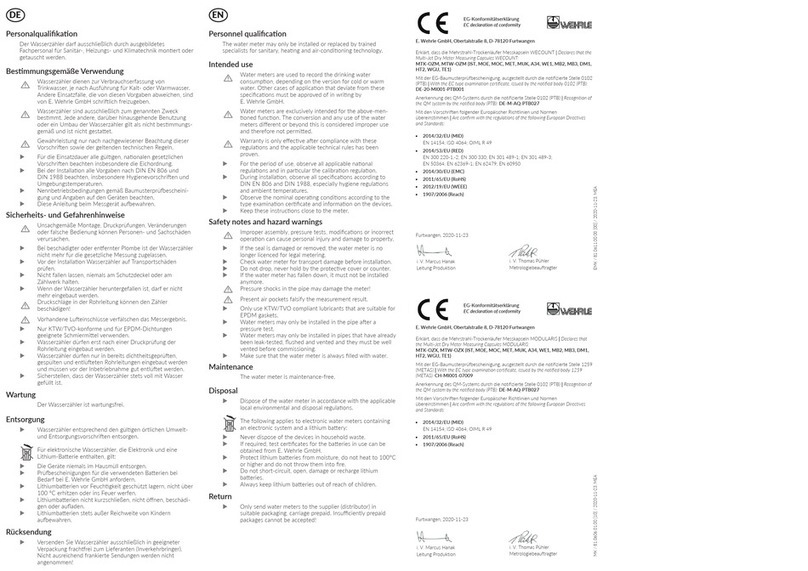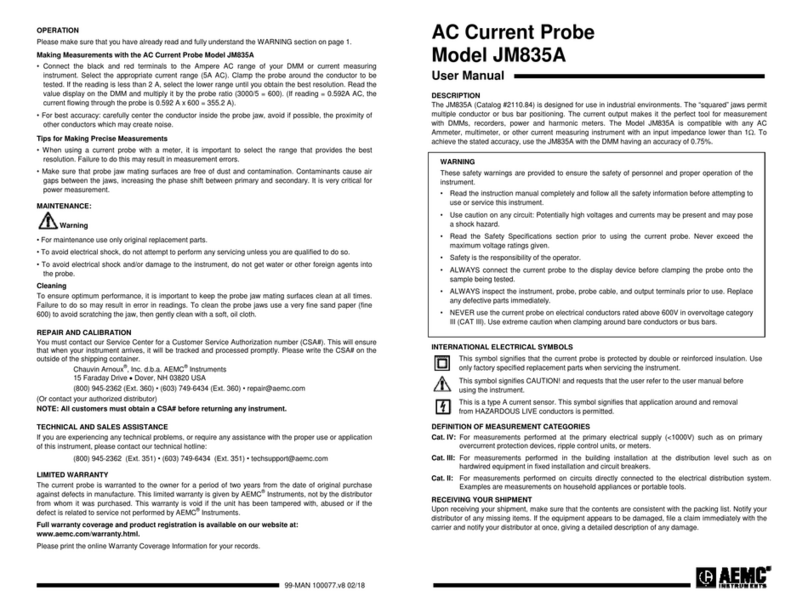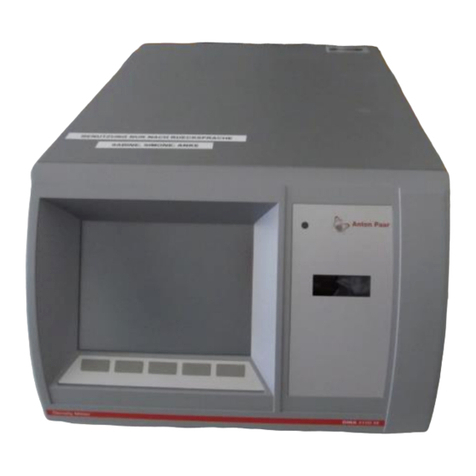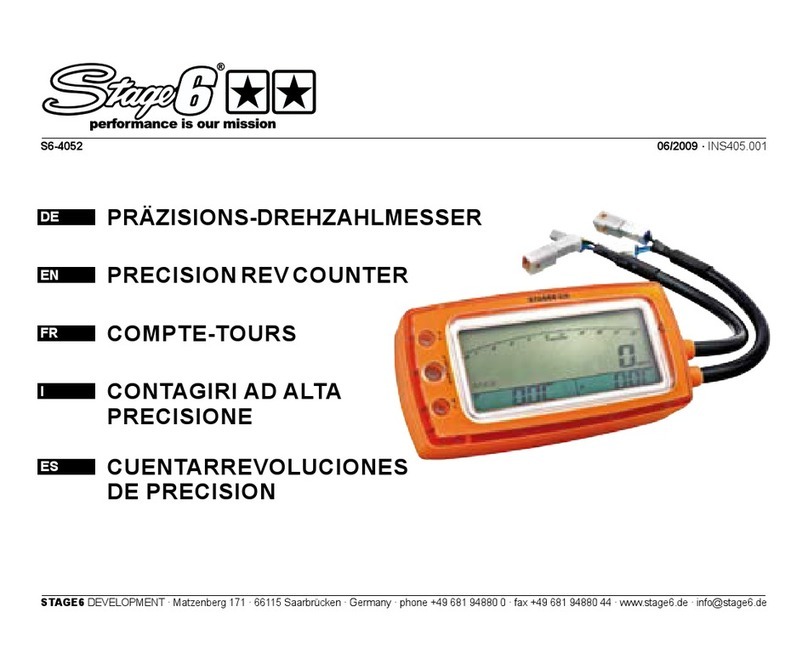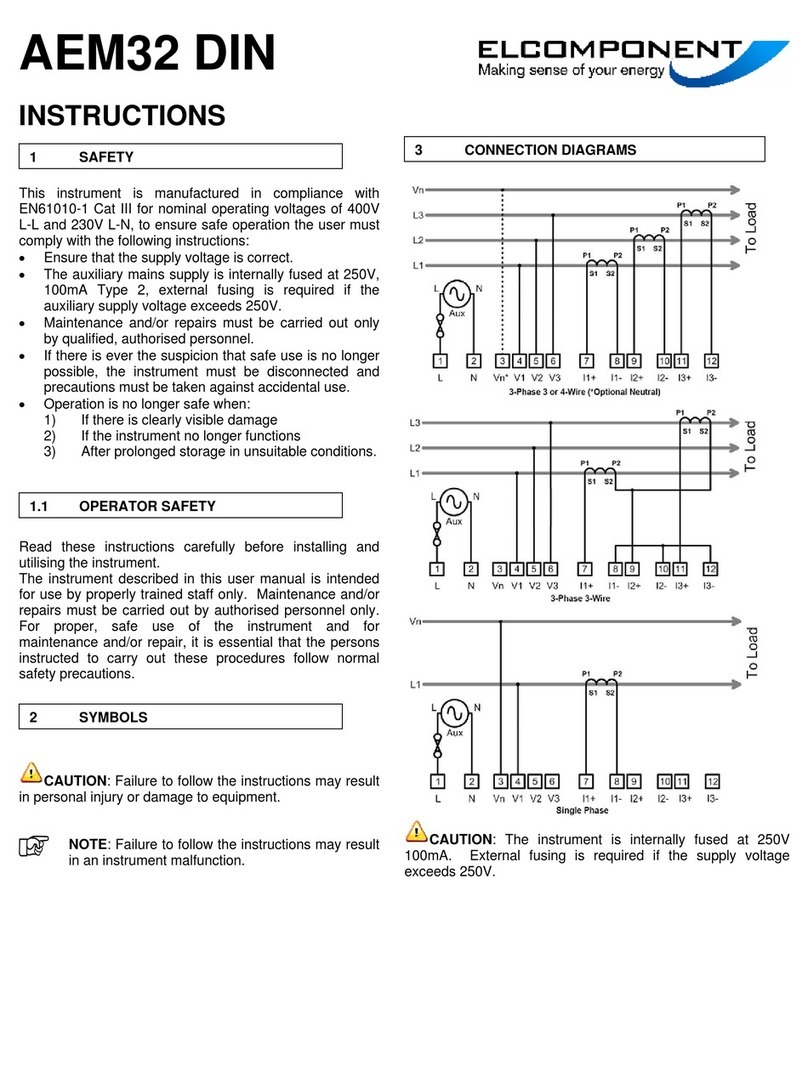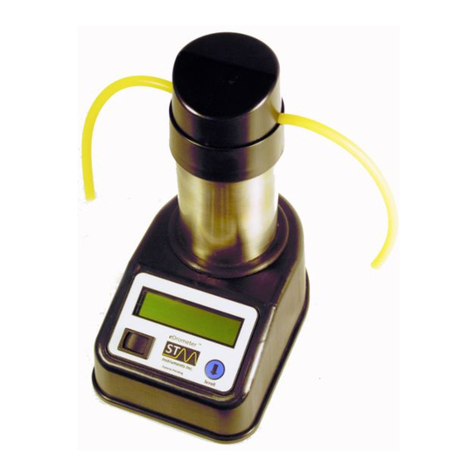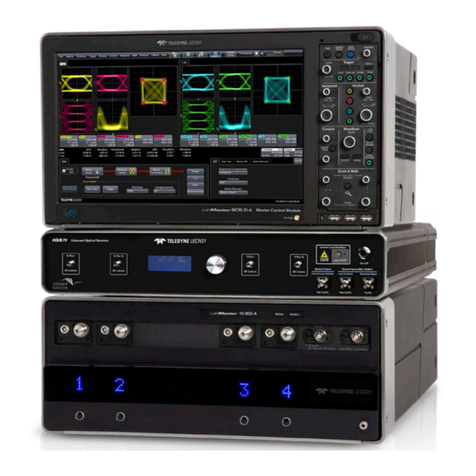sewerin Multitec 520 User manual

20.04.2016 a – 105779 – en
Multitec®520
Operating instructions

Multitec®520
Fig. 1: Multitec 520 device overview
%LEL
VOL%
VOL%
PPM
PPM
PPM
34
0.17
11.5
17
34
34
AL1 CH4
CO2
AL1 O2
NH3
AL1 CO
AL1 H2S
Alarm
Capacity
disposable battery/
rechargeable
battery
Warning
ExTox symbol
Gas
Current assignment of
function keys F1 – F3
Measured value Unit
Connector
Buzzer
USB port
ON/OFF key
Connection for
power supply
Signal light
Gas input
Function keys
Jog dial
Connector
Display
Supporting bracket
Fig. 2: Multitec 520 display

Display symbols
Menu Fault
OK Carry out device inspection
Esc Cancel Tab
(jump to next input eld)
Buzzer off Clear
Save Information
Stop measurement Warning ExTox
Capacity
disposable battery/
rechargeable battery
Open stored comment
Open stored inspector

Information about this document
The warnings and notes in the document mean the following:
ADANGER!
Risk of personal injury. Results include serious injury or
death.
AWARNING!
Risk of personal injury. Can result in serious injury or
death.
ACAUTION!
Risk of personal injury. Can result in injury or a risk to
health.
CAUTION!
Risk of damage to property.
Note:
Tips and important information.
Enumerated lists (numbers, letters) are used for:
● Instructions that must be followed in a specic sequence
Bulleted lists (bullet points, dashes) are used for:
●Lists
●Instructions comprising only one action
Numbers enclosed by forward slashes /.../ refer to referenced doc-
uments.

I
Contents Page
1 General.....................................................................................1
1.1 Warranty....................................................................................1
1.2 Purpose.....................................................................................2
1.3 Intended use .............................................................................3
1.4 General safety information ........................................................4
2 Features ...................................................................................5
2.1 Visual and audible signals.........................................................5
2.2 Sensors .....................................................................................6
2.3 Explosion protection..................................................................7
2.3.1 Passive explosion protection..................................................7
2.3.2 Active explosion protection ....................................................8
3 Operation .................................................................................9
3.1 General information on operation..............................................9
3.1.1 Keys and jog dial....................................................................9
3.1.2 Selecting/exiting menus and menu items.............................10
3.1.3 Switching the device on .......................................................10
3.1.4 Differences between measuring mode and settings mode ..12
3.2 Measuring mode .....................................................................12
3.2.1 Accessing the menu (measuring mode menu structure)......13
3.2.2 Zero point .............................................................................14
3.2.3 Warning ExTox .....................................................................14
3.2.4 Settings ................................................................................14
3.2.5 Starting/stopping a measurement ........................................15
3.2.6 Protocols ..............................................................................16
3.2.7 Device inspection .................................................................17
3.2.8 Gas type CxHy .....................................................................17
3.2.9 Device information ...............................................................18
3.3 Settings ...................................................................................18
3.3.1 Opening Settings..................................................................18
3.3.2 Settings menu structure .......................................................20
3.3.3 Adjustment ...........................................................................21
3.3.4 System .................................................................................22
3.3.5 Alarms ..................................................................................24
3.3.6 Date/time..............................................................................24
3.3.7 Memory ................................................................................24

II
Contents Page
4 Power supply.........................................................................25
4.1 Suitable disposable/rechargeable battery types .....................25
4.2 Operation with rechargeable batteries ....................................26
4.2.1 Charging...............................................................................27
4.2.2 Rechargeable battery maintenance .....................................27
4.3 Battery alarm...........................................................................28
4.4 Replacing disposable/rechargeable batteries .........................29
5 Maintenance ..........................................................................30
5.1 Device inspection ....................................................................30
5.1.1 General information on the device inspection ......................30
5.1.1.1 Scope................................................................................30
5.1.1.2 Frequency .........................................................................30
5.1.1.3 Documentation..................................................................31
5.1.1.4 Integrated device inspection .............................................31
5.1.1.5 Order.................................................................................32
5.1.1.6 Test gases for the device inspection .................................32
5.1.2 Carrying out the device inspection .......................................33
5.1.2.1 Accessing the device inspection .......................................33
5.1.2.2 Concluding the device inspection......................................34
5.1.3 Testing the general status ....................................................36
5.1.3.1 Housing.............................................................................36
5.1.3.2 Signals ..............................................................................36
5.1.3.3 Probe.................................................................................37
5.1.3.4 Filter ..................................................................................37
5.1.3.5 Pump.................................................................................37
5.1.4 Testing indication accuracy with supply of fresh air .............38
5.1.5 Testing indication accuracy with supply of test gas..............38
5.2 Adjustment ..............................................................................40
5.2.1 Scope ...................................................................................40
5.2.2 Test gases for the adjustment ..............................................41
5.2.3 Special features of adjustment with gas mixture..................42
5.2.4 Preparation...........................................................................43
5.2.5 Performing the adjustment ...................................................43
5.2.5.1 Adjusting the zero point.....................................................43
5.2.5.2 Adjusting the sensitivity.....................................................44
5.2.6 Carrying out an oxygen adjustment .....................................45
5.2.6.1 Adjusting the zero point for oxygen...................................46
5.2.6.2 Adjusting the sensitivity for oxygen...................................47
5.3 Servicing .................................................................................47

III
Contents Page
6 Faults......................................................................................48
7 Appendix................................................................................49
7.1 Specications and permitted operating conditions..................49
7.2 Alarms .....................................................................................50
7.2.1 Features ...............................................................................50
7.2.2 Occupational exposure limits (OELs) and
excess factors (STEL and LTEL).........................................53
7.2.3 Alarm thresholds (factory settings).......................................53
7.2.4 Setting ranges for gas types ................................................54
7.3 Limit values for the device inspection .....................................55
7.4 Memory capacity .....................................................................56
7.5 Sensors ...................................................................................57
7.5.1 Infrared sensors (IR) ............................................................57
7.5.1.1 Methane CH4, propane C3H8, butane C4H10, nonane C9H20 ..
57
7.5.1.2 Carbon dioxide CO2.........................................................58
7.5.2 Electrochemical sensors (EC)..............................................59
7.5.2.1 Oxygen O2........................................................................59
7.5.2.2 Carbon monoxide CO .......................................................59
7.5.2.3 Hydrogen sulphide H2S.....................................................60
7.5.2.4 Ammonia NH3...................................................................61
7.6 Technical information ..............................................................62
7.6.1 Identication sticker (back of device) ...................................62
7.6.2 Cleaning ...............................................................................62
7.6.3 Electrostatic charge..............................................................62
7.7 Accessories and consumables ...............................................63
7.8 EU declaration of conformity ...................................................64
7.9 Inspection protocols ................................................................65
7.9.1 Test with individual gases.....................................................65
7.9.2 Test with gas mixture............................................................67
7.10 Advice on disposal ..................................................................68
7.11 Terminology and abbreviations ...............................................69
7.12 Referenced documents ...........................................................70
8 Index.......................................................................................71

1
1 General
1 General
1.1 Warranty
The following instructions must be complied with in order for any
warranty to be applicable regarding functionality and safe opera-
tion of this equipment. This product must only be commissioned
by qualied professionals who are familiar with the legal require-
ments (Germany: DVGW).
●Read these operating instructions prior to operating the product.
●Use the product only as intended.
●Repairs and maintenance must only be carried out by special-
ist technicians or other suitably trained personnel. Only spare
parts approved by Hermann Sewerin GmbH may be used when
performing repairs.
●Use only suitable battery types, otherwise the device will not
be explosion-proof.
● Changes or modications to this product may only be carried
out with the approval of Hermann Sewerin GmbH.
●Use only Hermann Sewerin GmbH accessories for the product.
Hermann Sewerin GmbH shall not be liable for damages resulting
from the non-observance of this information. The warranty con-
ditions of the General Terms and Conditions (AGB) of Hermann
Sewerin GmbH are not affected by this information.
In addition to the warnings and other information in these Oper-
ating Instructions, always observe the generally applicable safety
and accident prevention regulations.
The manufacturer reserves the right to make technical changes.

2
1 General
1.2 Purpose
The Multitec 520 is a portable warning device for monitoring the
atmospheric air in the workplace. The device can measure up to
six gases simultaneously, thus offering comprehensive protection
against dangerous gas concentrations. It warns, for example, of:
●explosive gas concentrations
●lack of oxygen/excessive oxygen
●toxic gases
The device is tted with infrared sensors for measuring hydrocar-
bons CXHYand carbon dioxide CO2as standard. It can also be
equipped with electrochemical sensors for measuring O2, H2S,
CO, and NH3.
The infrared sensors operate on the principle of absorption via
infrared-active gases, and the electrochemical sensors operate
on the electrochemical cell principle.
Note:
These operating instructions describe the Multitec 520 with all
additional equipment (rmware version 1.XXX). All descriptions
refer to the device as delivered (factory settings). The manufac-
turer reserves the right to make changes.

3
1 General
1.3 Intended use
This device is intended for professional residential and commer-
cial use including small rms and commercial operations. The
appropriate specialist knowledge is required to operate the device.
The device may only be used to measure the following gases
(depending on additional equipment):
●Methane CH4/ Propane C3H8/ Butane C4H10 / Nonane C9H20
●Carbon dioxide CO2
●Oxygen O2
●Hydrogen sulphide H2S
●Carbon monoxide CO
●Ammonia NH3
The device must not be used for:
●Gas analysis of technical processes
●Monitoring liquids
The device can be used up to a temperature of 40 ºC. However,
high temperatures reduce the lifetime of the sensors and re-
chargeable batteries.
If a device with an electrochemical sensor is exposed to gas
concentrations above the measuring range limit, this can reduce
the lifetime of the sensor.

4
1 General
1.4 General safety information
●The device has been tested to ensure that it is explosion-proof
in accordance with European standards (CENELEC).
●The device must only be switched on with fresh air.
●Do not use this device in oxygen-enriched atmospheres, oth-
erwise it will not be explosion-proof.
● Only probe hoses with a hydrophobic lter may be used.
Exception:
If the probe has a built-in hydrophobic lter, the hose does not
require any other lters.
●If a device can be used for measuring nonane, special probe
hoses must be used (TG nonane probe hose, see Section 7.7
on page 63).
●The device must only be tested and adjusted with test gases
in well ventilated rooms or in the open air. Test gases must be
handled in a professional manner.
●Always carry out a device inspection after the device has suf-
fered an impact (for example, if dropped accidentally).
●The device complies with the limits of the EMC directive. Always
observe the information in the manuals of (mobile) radio equip-
ment when using the device close to (mobile) radio equipment.
Note:
Follow the advice regarding explosion protection (see Section 2.3
on page 7).

5
2 Features
2 Features
2.1 Visual and audible signals
The device features two alarms:
● Signal light on top of device (visual signal)
● Buzzer on side of device (audible signal)
The signals indicate alarms and faults. The device also emits
signals when it is switched on and off.
If this symbol appears on the display, the audible sig-
nal can be switched off.
When an audible signal has been switched off it can-
not be switched back on.
This symbol appears at the top left of the display as soon
as the audible signal has been switched off. It disappears
automatically if the level falls below the alarm threshold.
Operating signal
The device emits a visual signal and an audible signal at regular
intervals. This indicates that the device is working properly.
Alarm
The device can monitor several gases at the same time. If the
measured gas concentration of one or more gases exceeds spec-
ied limit values (alarm thresholds) the device gives a warning. It
emits both audible and visual signals, which are distinctly different
from the operating signal.
AWARNING! Danger of death due to hazardous gas
concentrations
An alarm always indicates danger.
●Take all necessary measures for your own safety and
the safety of others immediately.
There is detailed information on alarms in Section 7.2 on
page 50.

6
2 Features
2.2 Sensors
The device features two types of sensor:
● Infrared sensor (IR)
● Electrochemical sensor (EC)
Application Gas Measuring range Sensor
Warning ExTox CH40 – 100 % LEL IR
CO 0 – 500 ppm EC
CO20 – 5 % vol. IR
H2S 0 – 100 ppm EC
NH30 – 100 ppm EC
O20 – 25 % vol. EC

7
2 Features
2.3 Explosion protection
2.3.1 Passive explosion protection
The device is assigned to the following explosion-proof groups:
Explosion-proof
group
For the following
atmospheres
When
using
II2G Ex d e ib IIB T4 Gb – Methane CH4
– Propane C3H8
– Butane C4H10
– Nonane C9H20
– Hydrogen sulphide H2S
– Carbon monoxide CO
– Ammonia NH3
Device
without
carrying
bag TG8
II2G Ex d e ib IIC T4 Gb – Methane CH4
– Propane C3H8
– Butane C4H10
– Nonane C9H20
– Hydrogen sulphide H2S
– Carbon monoxide CO
– Ammonia NH3
– Hydrogen H2
Device with
carrying
bag TG8
EC type-examination certicate: TÜV 07 ATEX 553353 X
ADANGER! Risk of explosion due to sparks
●Only open the battery compartment outside of explo-
sive areas.
●Only charge the device outside of explosive areas.
●Only use the USB port outside of explosive areas.
●Use only suitable battery types.
●When working with hydrogen, always use the carrying
bag TG8 for the device.

8
2 Features
2.3.2 Active explosion protection
The functional safety test applies to:
Application: Warning ExTox
Gas types: Measuring range: As per:
– Methane CH40 – 100 % LEL /7/
– Propane C3H80 – 100 % LEL /7/
– Nonane C9H20 0 – 100 % LEL /7/
Gases: Measuring range: As per:
– Oxygen O20 – 25 % O2/5/
– Carbon dioxide CO20 – 5 % CO2/3/
– Carbon monoxide CO 0 – 500 ppm CO /3/
– Hydrogen sulphide H2S 0 – 100 ppm /3/
Tested accessories: – Test set SPE VOL
– Flexible hand probe, 1 m
– Floating probe 2 m,6 m
– Probe hose TG nonane,
1 m, 6 m
Type examination
Testing institute: DEKRA EXAM GmbH
Certicates: PFG 08 G 002 X
BVS 09 ATEX G 001 X
The following points were not part of the type examination:
●Saving measurement data (see Section 3.2.5 on page 15)
●Saving protocols from the integrated device inspection (see
Section 5.1.1.4 on page 31)
●Disposable alkaline batteries for the power supply (see Sec-
tion 4.1 on page 25)

9
3 Operation
3 Operation
3.1 General information on operation
3.1.1 Keys and jog dial
The ON/OFF key is the only control on the device that does not
change its function.
When switched on, the device is operated using the jog dial and
function keys to navigate the display.
Control Action Function
ON/OFF key Press ●Switches the device on
●Switches the device off
Function keys
F1, F2, F3
Press ●Variable
●As indicated on the display at
the bottom of the screen
●Function keys may also have
no function assigned in some
cases
Jog dial Turn ●Selects functions, settings,
measurement data, etc.
● Modies values
Press ●Opens the next program lev-
el (e.g. menu item, function,
measurement data, selectable
values)
●Accepts values

10
3 Operation
3.1.2 Selecting/exiting menus and menu items
Functions and settings etc. are selected via the main menu (for
short: Menu). This menu has submenus and menu items. Refer
to Section 3.2.1 on page 13 for information on accessing the
menu.
Selecting submenus/menu items
Submenus and menu items are selected and opened using the
jog dial and/or function keys.
In measuring mode the Warning ExTox application is indicated
by the symbol at the top left of the display.
Exiting menus/menu items
There are generally two ways to exit open menus/menu items
and go back up a level:
●Press Esc
●Select Exit menu item
3.1.3 Switching the device on
Note:
Always switch the device on with fresh air.
●Press the ON/OFF key. The device switches on.
The switching on process involves an internal check.
Process Test purpose
Buzzer
emits audible signal.
Is the audible signal working?
Signal light
gives visual signal.
Is the visual signal working?
Display
is inverted.
Are there pixels missing from the
display?
The start screen appears on the display.

11
3 Operation
Fig. 3: Start screen
Display:
– Device type: Multitec 520
– User:
Frank Smith
City Council
Leakage Delivery
– Firmware version: V1.200
– Date and time
– Capacity disposable battery/
rechargeable battery
An overview of the measurable gases and corresponding alarm
thresholds is then briey displayed.
Warning ExTox
Range
CH4 100 %LEL
CO2 5.00 VOL%
O2 25.0 VOL%
NH3 100 PPM
CO 500 PPM
H2S 100 PPM
AL1 AL2 STEL LTEL
10 5
0--
0.50 1.00 1.00 0.50
18.0 23.
0--
50 75 50 50
30 60 30 30
10 20 10 10
Display:
– Symbol: Warning ExTox
– Detectable gases
– Measuring range
– Alarm thresholds
– Capacity disposable battery/
rechargeable battery
Fig. 4: Overview of detectable gases and alarm thresholds
The device switches to measuring mode.
%LEL
VOL%
VOL%
PPM
PPM
PPM
0
0.04
20.9
0
0
0
CH4
CO2
O2
NH3
CO
H2S
Display:
– Current readings: zero when
device is switched on with fresh
air
Fig. 5: Measuring mode – display of current readings
The device is ready for use.

12
3 Operation
AWARNING! Danger of death due to incorrectly ad-
justed or faulty devices
Gas warning instruments must be inspected before use
at regular intervals.
●Carry out a device inspection every day before starting
work.
3.1.4 Differences between measuring mode and settings mode
The device is operated in two modes:
●Measuring mode (see Section 3.2 on page 12)
Measurements are taken in measuring mode. All functions
needed to take readings can be accessed from one menu.
●Settings (see Section 3.3 on page 18)
The device settings can be changed in settings mode. Infor-
mation about the device can also be retrieved. Measurements
cannot be taken in settings mode.
Settings are accessed via the menu in measuring mode. The
settings are access-protected by a PIN code.
AWARNING!
Danger of death due to lack of alarm signal
The device only issues alarms in measuring mode. As
soon you access the menu, alarms are no longer triggered.
●Only change the settings outside of explosive areas and
away from toxic or low-oxygen atmospheres.
3.2 Measuring mode
When switched on, the device is in measuring mode. In measur-
ing mode, the current measurements are always displayed (see
Fig. 5). However, to save the data from a measurement, you must
always start the measurement manually (see Section 3.2.5 on
page 15).

13
3 Operation
AWARNING!
Danger of death due to operating signal failure
If the operating signal fails, the device is not safe to use.
●Stop using the device immediately.
●Move away from explosive areas or toxic or low-oxygen
atmospheres immediately.
3.2.1 Accessing the menu (measuring mode menu structure)
In measuring mode F1 can be used to access the menu.
Zero point
Warning ExTox
Settings
Start measurement
Protocol
Device inspection
Gas type CxHy
Device information
Exit
Fig. 6: Menu with submenus/menu items
Once you have started a measurement, Start measurement in
the menu becomes Stop measurement. You can nd detailed in-
formation on starting and stopping measurements in Section 3.2.5
on page 15.
Protocol does not appear in the menu until you save a protocol
for the rst time.
Gas type CxHy only appears in the menu if the device is equipped
for at least one further gas type apart from methane CH4.
Table of contents
Other sewerin Measuring Instrument manuals
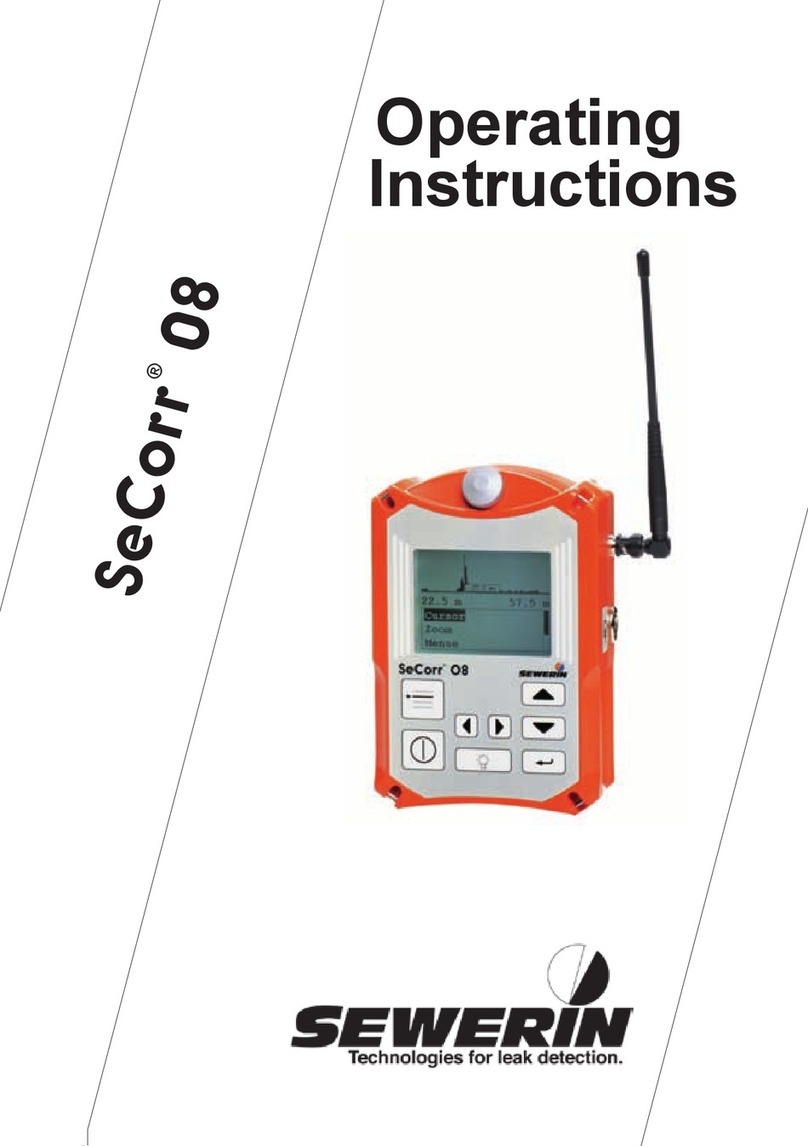
sewerin
sewerin SeCorr 08 User manual
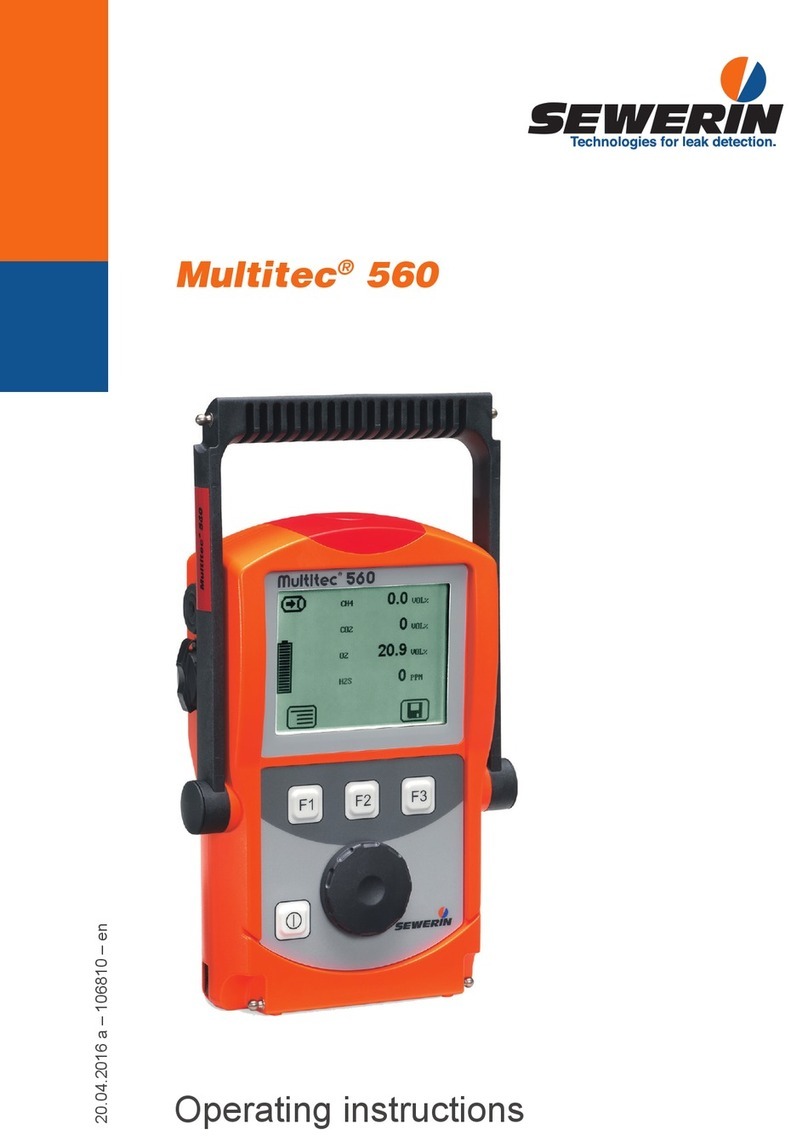
sewerin
sewerin Multitec 560 User manual
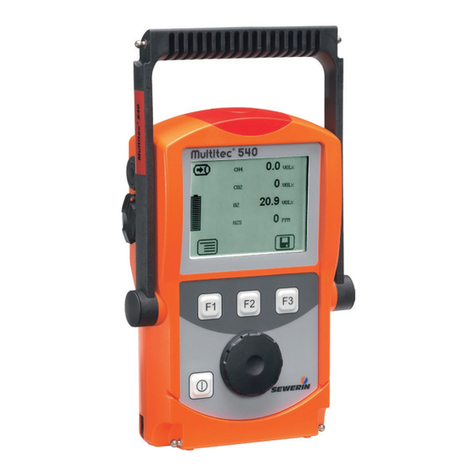
sewerin
sewerin Multitec 545 User manual
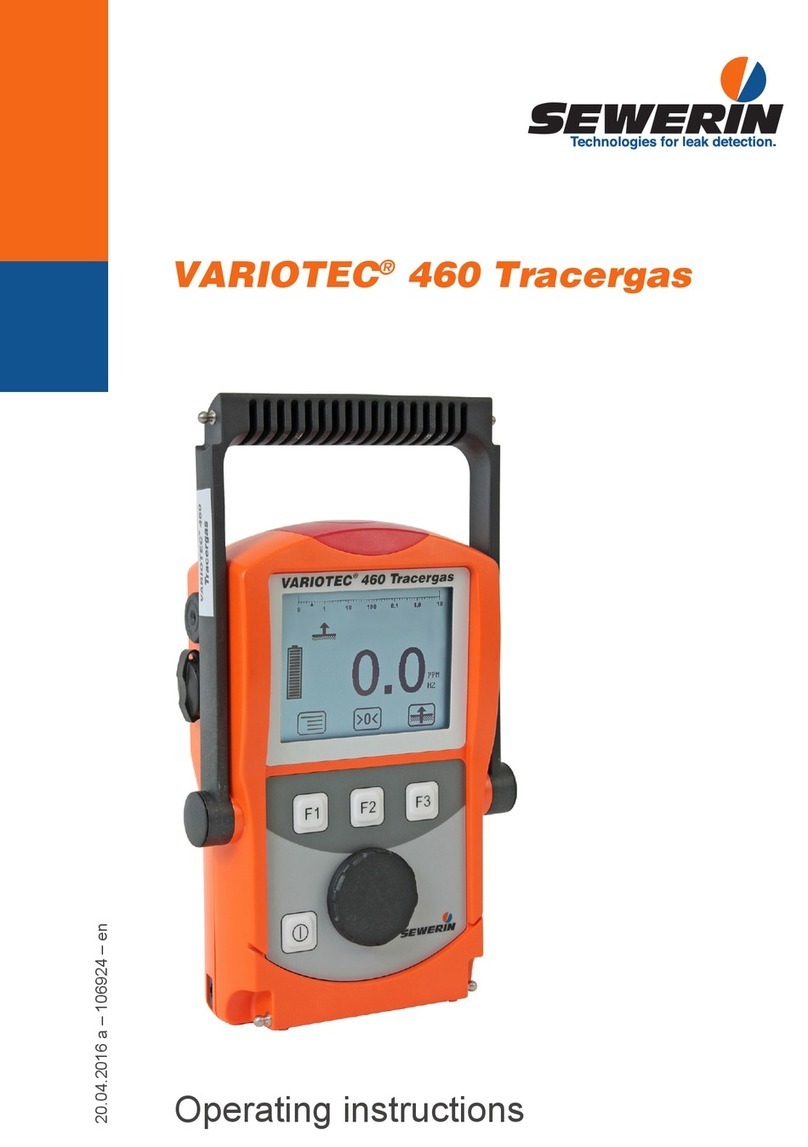
sewerin
sewerin VARIOTEC 460 Tracergas User manual
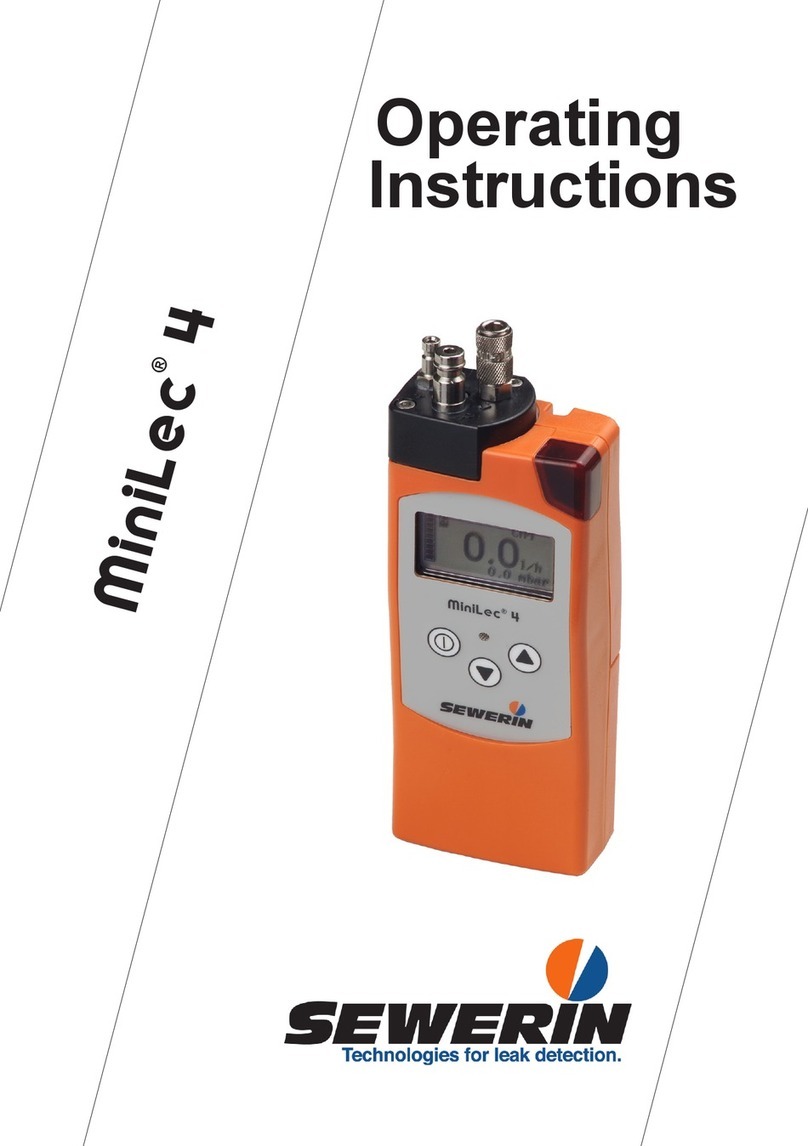
sewerin
sewerin miniLec 4 User manual
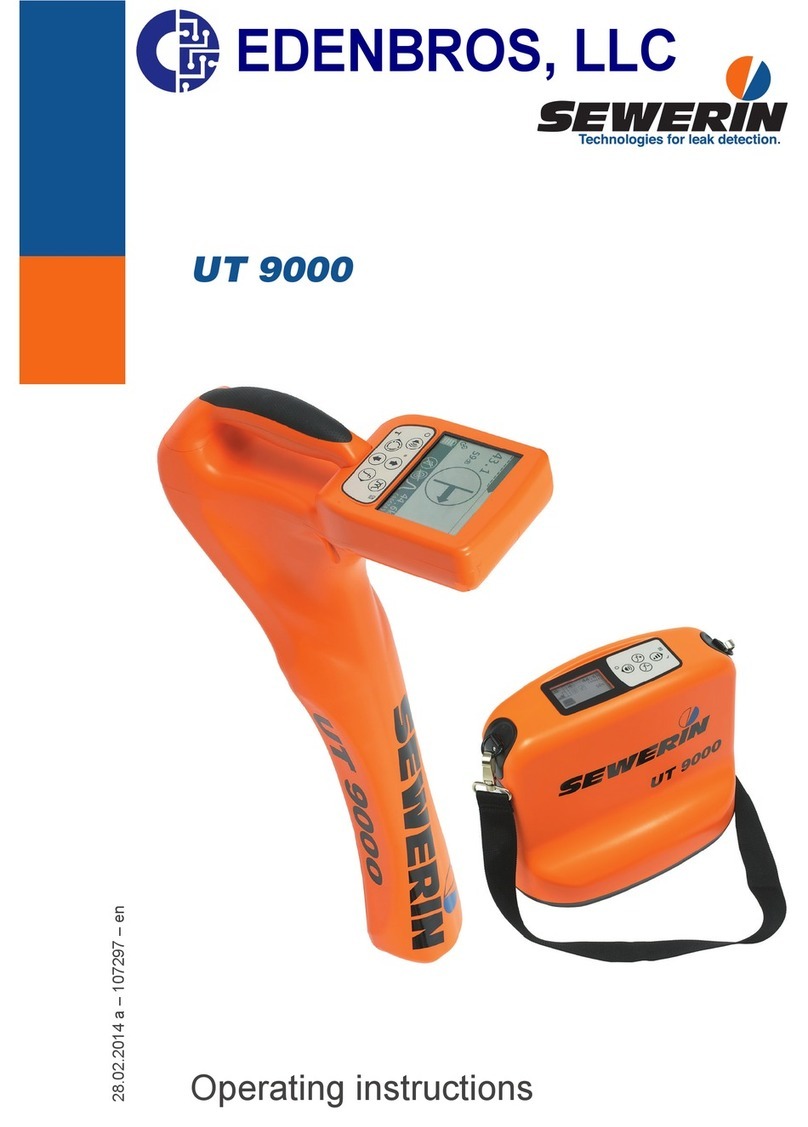
sewerin
sewerin UT 9000 User manual
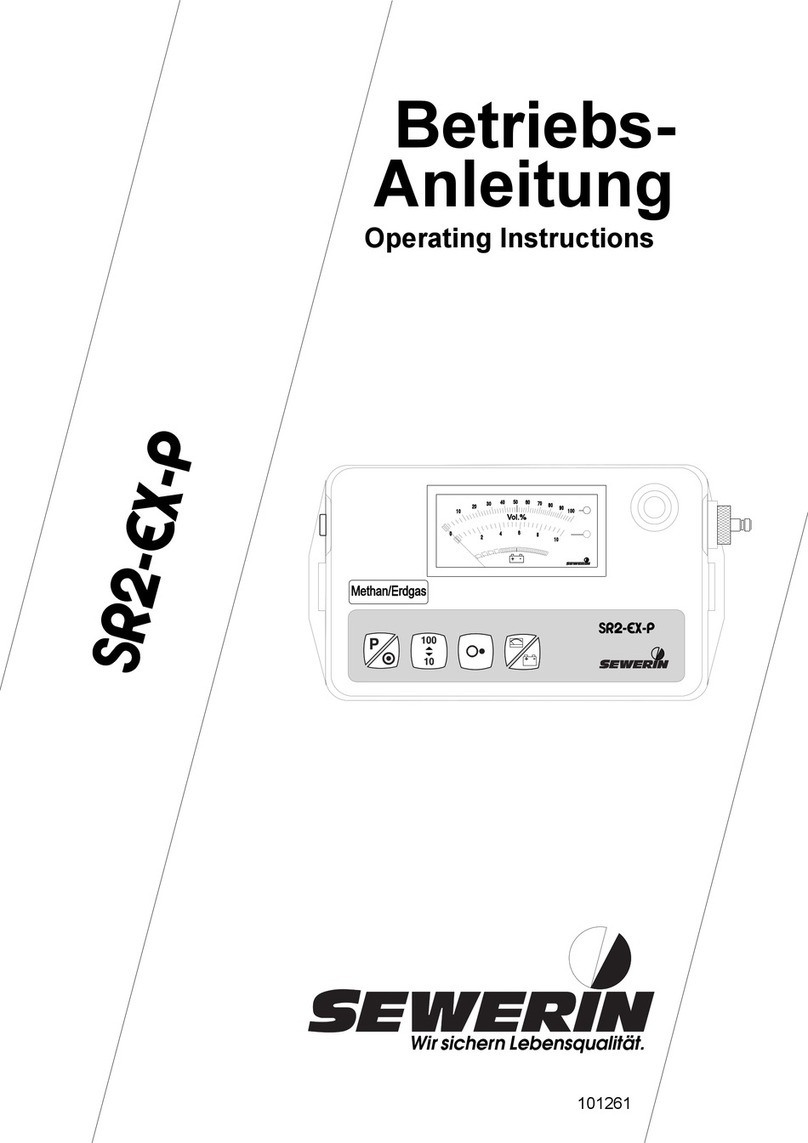
sewerin
sewerin SR2-EX-P User manual
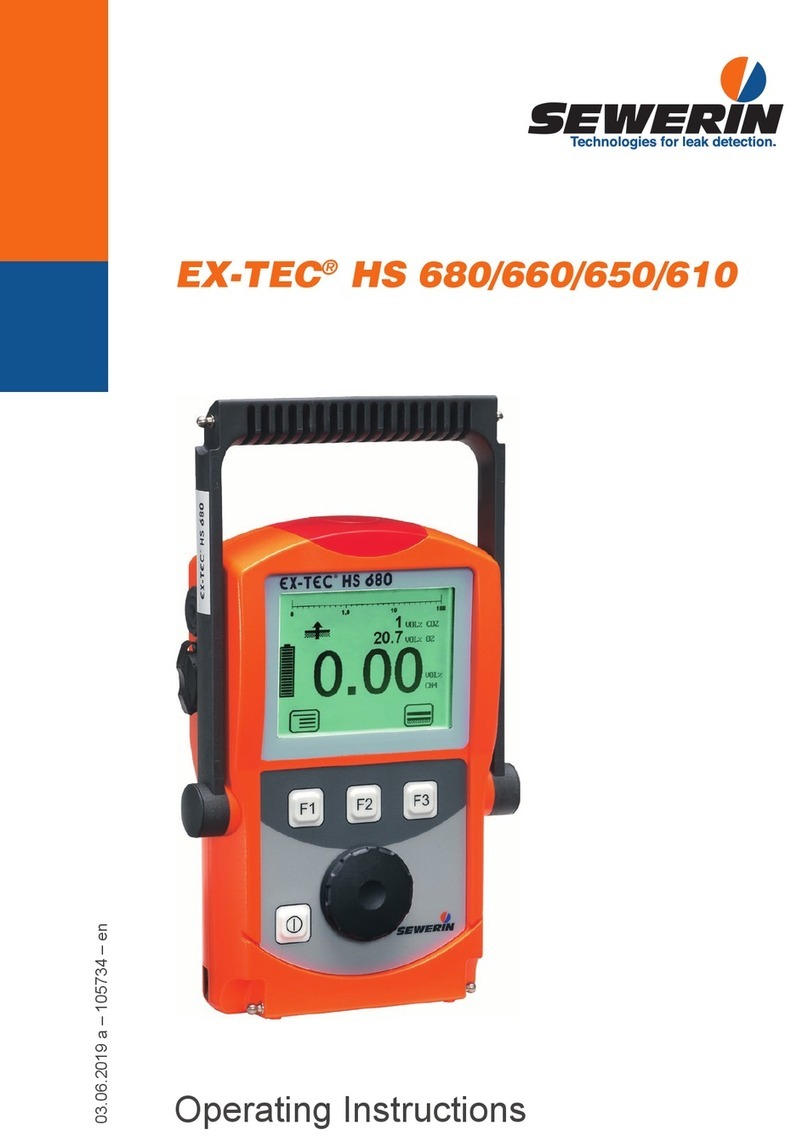
sewerin
sewerin EX-Tec HS 680 User manual
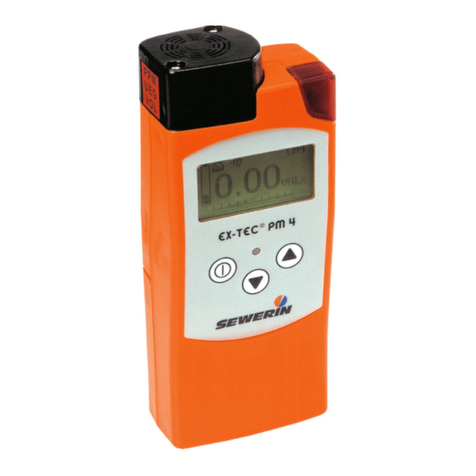
sewerin
sewerin EX-TEC PM 4 User manual
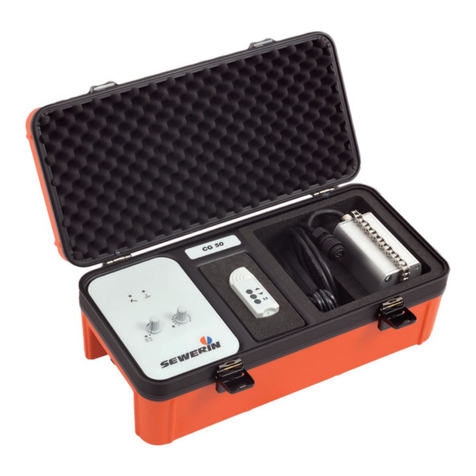
sewerin
sewerin COMBIPHON User manual
